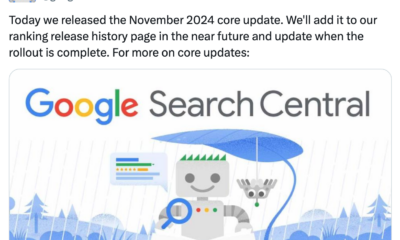MARKETING
How to use decision intelligence to tackle complex business challenges

Complex decision-making has become increasingly challenging as strong operational excellence and productivity, especially within marketing organizations, become vital competitive advantages. Across the board, the most successful companies and investors depend on fast and accurate decision-making, ranging from lead nurturing to recruiting and investment decisions.
Research shows that businesses make up to three billion decisions annually and a recent survey by Gartner reported that 65% of decisions are more complex (involving more stakeholders or choices) than they were two years ago.
Many businesses today, and the marketers that serve them, need better insight to bridge the gap between massive amounts of data and business decisions. Only 24% of companies say they are “data-driven,” whereas others face missed opportunities, inefficiencies, and increased business risks. The average S&P company loses $250 million annually due to poor decision-making.
Decision intelligence is a framework that bridges the gap between insights and decisions. It empowers organizations to make better, consistent, and data-driven decisions. Leaders and teams can make informed decisions at every level of the company!
What is decision intelligence?
Decision intelligence (DI) is an evolving discipline that combines data, analysis, AI, automation, and experience to make better decisions. DI helps guide decision-makers with actionable insights using optimization, simulation, and decision-analysis techniques.
In contrast to traditional decision-making approaches, which rely heavily on intuition and experience, DI incorporates methodical, analytical, and data-driven approaches.
The focus of DI is not just on the technology but on how it augments human decision-making processes. It is a multidisciplinary field drawing on expertise from various arenas, including computer science, statistics, psychology, economics, and business.
According to Dr. Loren Pratt, chief science officer and co-founder of DI software provider Quantellia, and author of “How Decision Intelligence Connects Data, Actions, and Outcomes for a Better World,” another key concept of DI is designing decisions like organizations design homes, buildings, and airplanes — by creating a blueprint first.
Much like a blueprint, a decision design helps align everyone involved in that decision — including stakeholders — around its rationale. She found that by treating decisions like a design problem, you can bring many design best practices to bear, such as ideation, documentation, rendering, refinement, QA, and design thinking.
In 2019, Google’s first Chief Decision Officer, Cassie Kozyrkov, established a new decision intelligence engineering discipline to augment data science with behavioral science, economics, and managerial science to focus on the next business advantage beyond the data.
Intelligent decisions are designed, simulated, automated, monitored, and tuned.
Dig deeper: Why data-driven decision-making is the foundation of successful CX
What decision intelligence is not
Decision science. Decision science has usually been associated with the qualitative side of data. DS is the overarching term, while “decision intelligence” is the operational side.
Strategic intelligence. Broadly, strategic intelligence means using BI insights to drive and support strategy. We also call this market intelligence which provides businesses with current industry trends and makes sense of consumer behavior to navigate a future course of action.
Calculated decisions. Not every output or recommendation is a decision, Kozyrkov says. In decision analysis terminology, a decision is only made after an irrevocable allocation of resources takes place. If you can change your mind for free, no decision has yet been made.
Applications of decision intelligence
DI applies to various decision-making problems, such as resource allocation, risk management, strategic planning, and, yes, marketing. I’ve used it in developing systems and platforms for complex energy, finance, policy, and marketing decisions.
Our last startup platform supported DI for go-to-market executives reducing the decision-making process from nine months to a fraction of time with greater visibility, training, and impacts.
DI has been applied in credit applications or fraud detection in financial services. It has been used in retail to determine how much inventory to purchase, optimal stock levels, or price forecasts. According to Dr. Loren Pratt, employing decision intelligence can positively impact evidence-based decisions in a healthcare crisis.
Other use cases include customer satisfaction, marketing attribution, and competitive and go-to-market strategies. Designs of the framework of these decisions were standard for GTM; however, implementation required building an enterprise platform, training, and data support. But in the end, this decision-making time dropped from nine to one-to-three months. The average impact was over $10 million, including an apparel company discovering a new $90 million revenue stream embracing the platform.
Dig deeper: Automating decisions with real-time situational context
Benefits of decision intelligence
McKinsey senior partner Kate Smaje states that organizations are now accomplishing in 10 days what used to take 10 months. Having DI supports the continually increasing pace of decisions required to stay competitive.
The first benefit is DI aids leaders in navigating complex decisions with more focused and comprehensive information. As you design the decisions, you can structure cross-organizational information toward specific goals or objectives. Having this kind of visibility facilitates navigating trade-offs between competing objectives. It eliminates more of the analysis paralysis found in most strategic and high-level tactical decisions.
Next, DI reduces risk and uncertainty. Decision-makers with real-time data and insights can leverage DI to identify and proactively mitigate potential risks. With the visibility in trade-offs, organizations can better apply risk/reward plans to avoid costly mistakes hindering a competitive edge.
Decision Intelligence enhances efficiency and productivity. By automating specific decision-making processes and providing decision-makers with real-time data and insights, DI can help streamline decision-making and improve productivity. You are reducing decision latency. These processes can be built or programmed into systems to free up time and resources to explore more options or allocate to other important tasks and initiatives.
Finally, organizations leveraging DI gain a more potent competitive edge by leveraging data and technology by evaluating, then acting on, more intelligent and faster complex decisions which typically cripple momentum or transformation.
Limits and challenges of decision intelligence
With data, AI, and automation involved, it’s not surprising that there are some challenges and limitations that are also present with DI.
Ethics/bias. DI can methodically help reduce bias and reinforce ethical decisions. At the same time, with any data-driven and automated system, decisions leveraging DI built by humans still risk being developed based on biased or discriminatory data or algorithms. Awareness training, along with all other organizational data-driven efforts, is a must.
Data availability. Leaders and project managers must be aware of data access and availability limitations. Decision effectiveness is often challenging to find on smaller datasets. Sometimes things go wrong, but it’s more based on luck than data. For complex and infrequent decisions, an organization may need help to define an approach for measuring decisions. In such cases, technology limitations may prevent a solution. Organizations need to formalize such decision-making processes and can only use technology. Also, it’s worth highlighting what could be missing or the scope of what’s possible.
Resistance. An important part of DI is ensuring more transparency, consistency, and training in the decision-making process. The traditional culture of decision-makers will initially be resistant as it feels that it dismisses their experience or instinct or runs against their specific agendas. Those in charge of DI efforts need to communicate how DI benefits their efforts and leads to better outcomes for individuals and organizations.
Leaders can overcome these challenges and limitations through clear communication and a well-defined scope of its application. Each new initiative can grow and enhance an organization’s decision-making culture.
Tips and factors
- Choose a focused decision. Begin by implementing DI in functions where business-critical decision-making needs improvement (e.g., data-driven, AI-powered). Alternatives include large complex decisions or ones that can be scaled and accelerated through automation.
- Begin with outcomes. There’s a flood of data in your organization, but you should only gather relevant data to that outcome to design a decision model. Add additional data or test theories of additional information once you’ve started with your early set.
- Map out decisions. Document assumptions, thoughts, emotions, concerns, and fears involved in your decisions. Review them quarterly or semi-annually. It will increase your organization’s decision-making muscle.
- Don’t automate everything. Humans, especially when it comes to complex and sensitive decisions, are necessary.
- Authority should be to the decision. Provide authority to make decisions to the people closest to the point of impact of that decision. Ownership will incentivize effective decision-making.
- Develop new decision-making habits. Teach decision-makers to apply systematic best practices, such as critical thinking, trade-off analysis, recognizing bias, and listening to opposing views.
- Beware narrow framing. In the book “Decisive” by Chip and Dan Heath, the authors explain that a straightforward way to improve decision-making is to avoid limiting the scope of the frame. A decision is rarely just a “yes” or “no.” There are always multiple options, so have at least three available for any decision.
Decision-makers frequently need more information, time, and experience to make complex decisions. A study by Bain found that business performance seems 95% correlated to the effectiveness of decisions. Decision intelligence systems improve efficacy by explaining and justifying the decisions, learning from past decisions’ feedback, and comparing the impact to improve decision effectiveness.
Decision intelligence is a crucial tool that can help you make better decisions. By combining data science, AI, and human expertise, DI can help reduce uncertainty and improve effectiveness. However, DI has its challenges and limitations. You must be aware of these risks and take steps to mitigate them.
Get MarTech! Daily. Free. In your inbox.
Opinions expressed in this article are those of the guest author and not necessarily MarTech. Staff authors are listed here.










